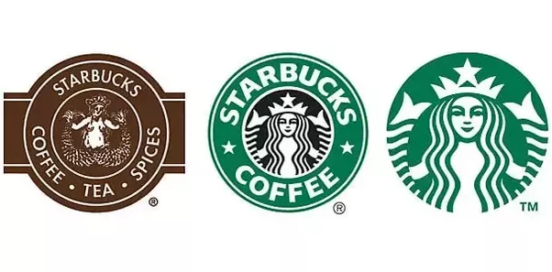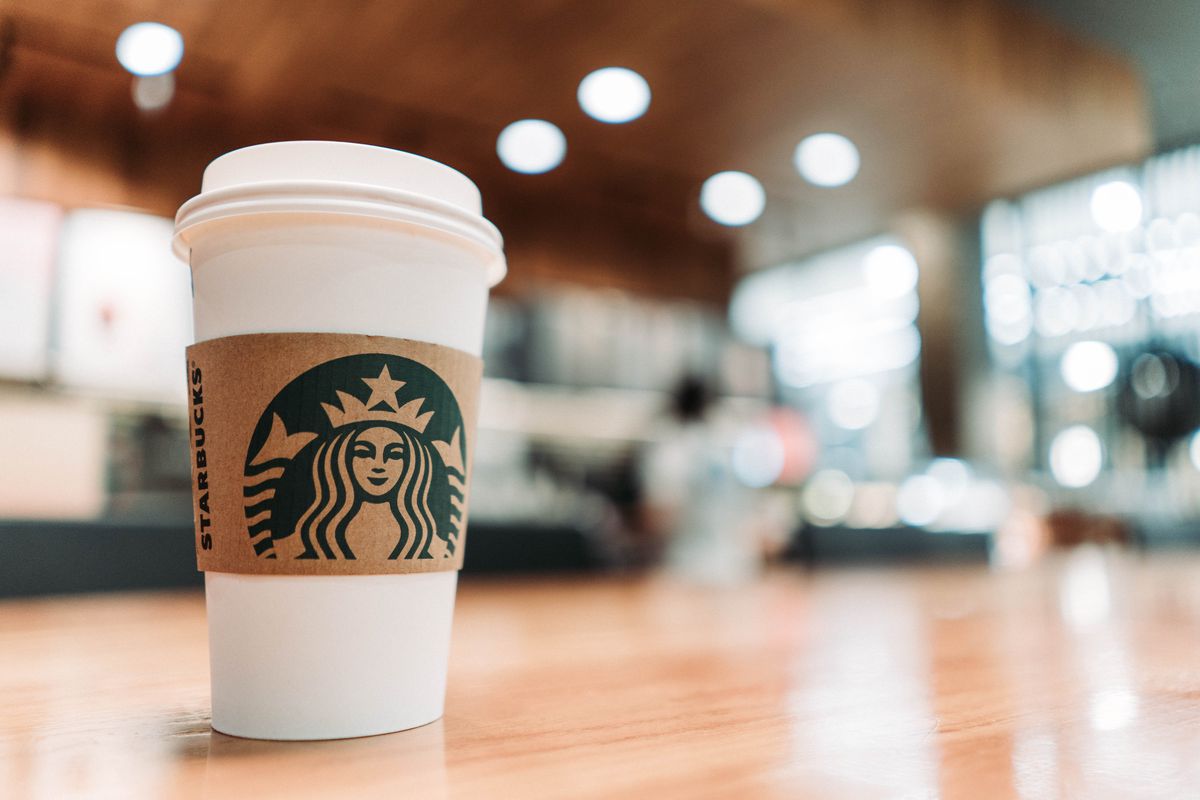Think of coffee, and one name always stuck our mind. The name is Starbucks. What was started as coffee beans and equipment selling shop, is now the largest coffeehouse and roastery reserves brand in the world. It is an American multinational chain of the coffeehouse, founded by Jerry Baldwin, Gordon Bowker, and Zev Siegal in 1971 in Seattle, Washington.
The idea of converting a coffee shop into a cafe was brought by Howard Schultz when he went to Milan, Italy, for a trip. The idea was to present an environment before the customers where they could just relax and savor coffee. Schultz was working as the then, head of marketing at Starbucks.
Innovation and experimentation are at the heart of Starbucks. It keeps experimenting with logos, from a brown mermaid spreading her tails, tea, and spices written on it, to a green mermaid with no text on it showing how customers started to recognize its brand merely by its logo and that tells how much this brand is being loved.

Similarly, the baristas working at Starbucks experiment with coffee and come up with innovative beverages with different flavors.
History of Starbucks
Starbucks is one of the world’s most recognizable and successful coffee chains, known for its high-quality coffee, inviting atmosphere, and strong brand identity. Here’s a brief history of Starbucks:
The company was founded in 1971 in Seattle, Washington, by three partners: Jerry Baldwin, Zev Siegl, and Gordon Bowker. The original Starbucks store was a single location that sold high-quality coffee beans and coffee-making equipment.
In 1982, Howard Schultz, a former Starbucks employee, visited Italy and was inspired by the Italian coffee culture he experienced there. Schultz believed that Starbucks could bring a similar coffee experience to the United States, and he convinced the founders to open a new store that would serve espresso-based drinks.
Schultz eventually became the CEO of Starbucks and helped to grow the company into a global brand. In the 1990s, Starbucks began opening new stores outside of Seattle, and by the end of the decade, the company had over 1,000 stores in the United States.
Starbucks continued to expand rapidly in the 2000s, opening stores in international markets and introducing new products such as Frappuccinos and breakfast sandwiches. The company also faced some challenges during this period, including criticism over its labor practices and concerns about the impact of its expansion on local coffee shops.
In 2008, Schultz returned to the role of CEO and began implementing changes to refocus the company on its core values and mission. Starbucks closed some underperforming stores and focused on improving the customer experience in its remaining stores. The company also introduced new sustainability initiatives, such as serving coffee in reusable cups and supporting coffee farmers through its C.A.F.E. Practices program.
Today, Starbucks is one of the largest coffee chains in the world, with over 32,000 stores in 83 countries. The company continues to innovate and evolve, introducing new products such as nitro cold brew and plant-based options. Starbucks remains committed to its values of quality, sustainability, and community engagement, and the company’s brand is recognized and beloved by coffee drinkers around the world.
Starbucks is about Selling the experience to the customers
Even after being so expensive, Starbucks has been people’s favorite. How is it so?. This question often gets us. And the answer to that is its uniqueness and the atmosphere that it delivers to the customers. It takes care of even the smaller needs of their customers, like providing the facility to charge the laptops and mobile phones and WiFi access so that they can work comfortably. This place is not only known for selling coffee but more than that. It sells an experience, an atmosphere that allows the customers to savor the taste of coffee and gives a pleasurable memory.
It won’t be wrong to say that Starbucks focuses on three things – Customer satisfaction, quality of the product, and the ambiance.
Starbucks further expanded its company by opening a store in Tokyo, Japan, in 1996. It was its first store outside America.
Experimenting with the coffee
From 1971 to date, Starbucks has been coming up with new and unique products to make their customers feel special and to offer a varied portfolio of products. In 1994, the company started selling ‘Frappuccino’ beverages. In 2008, it came up with lower calorie and sugar-free versions of the drinks that the company used to provide. In 2009, the company started selling salads and baked goods with no artificial ingredients to promote healthy habits. It also came up with instant coffee packets called ‘Ready brew.’ In 2012, Starbucks began selling a line of iced Starbucks refresher beverages that contain an extract from green arabica coffee beans. In 2014, Starbucks started producing its sodas.
The strategy which helped the company come out of losses
Worsening economic conditions in the US in 2007 had been the reason for losses that Starbucks had to face for the very first time since its inception. Because of the weak economy, customers were unwilling to spend amounts on buying coffee from Starbucks. To deal with the losses, around 600 stores in the US had to be closed.
Starbucks had to open an express store to ensure fast service, few items like baked food, juices were added to the menu, but things didn’t work out, and the company lost its customer base, leading to declining in morale of employees. At that time of darkness, a ray of light was needed. And that was brought by Howard Schultz, who came back as a CEO in 2008.
He came up with the following strategy :
- Hired a Chief Technology Officer to improve the website
- Closed underperforming stores
- Optimized the supply chain
- Communicated with the stores nationwide and decided to come up with new advertising ideas
- Redesigned the store layouts
These activities helped, and the company’s financial position improved. A planning and its proper implementation had brought the company back into profitable ways.
The success of Starbucks in India
The company was of the view that India would prove to be a great market, mainly because the majority of its population is the youth who loves to hang out at cafes and restaurants. The decision to introduce a coffee house in India was, however, risky also because India was traditionally a tea-drinking country. Despite the risk factor, Starbucks was keen to expand its market in India and grab opportunities. It thus opened its first store in Mumbai, India, in October 2012 with the help of Tata Global Beverages.
Slowly and gradually, Starbucks opened its store all over India. India is currently the fastest-growing market in the history of Starbucks. There are 174 stores all over India as of January 2020. The expertise of Tata Global Beverages in local tastes further proved to be helpful for the company.
The company also modified its menu as per the local tastes so that they could attract the Indian target market. The company is successfully carrying out its operations in India as well as in other countries. Around 30,000 Starbucks stores are in process in about 77 countries.
Also Read: How Did Royal Enfield Become The Darling Of Indian Youth
How Starbucks built the ‘Brand Starbucks’
Starbucks growth graph will always be an upward sloping curve because of the factors like:
Most loved places after home and offices: People, especially youths and working people generally spend most of their time hereafter home and workplaces.
Technology: The company keeps itself updated with the newest technology. For instance, Starbucks in-house has built a cloud-based clover coffee machine. They use cloud technology to monitor coffee makers, to take customers’ orders.
Customer Service: The kind of hospitality and service Starbucks provides is quite impressive. It has helped to build a trust factor with the customers.
So, next time if you cross Starbucks, have a seat inside and experience the beauty, the taste, the aroma, the rustic brown ambiance, and the uniqueness that this coffee house provides. You will realize that it’s not for the product(Coffee) that you are paying but for the service.
For more such articles, Subscribe to our newsletter.
Go to the full page to view and submit the form.


